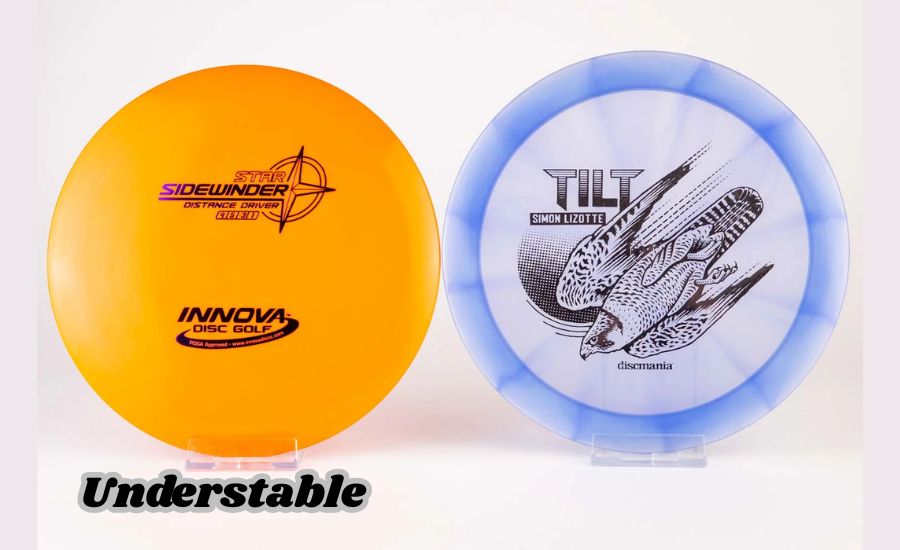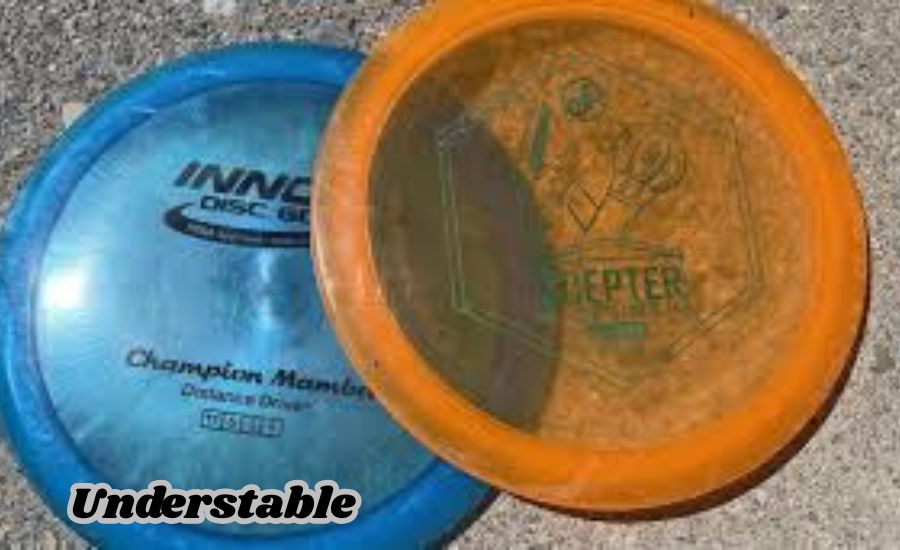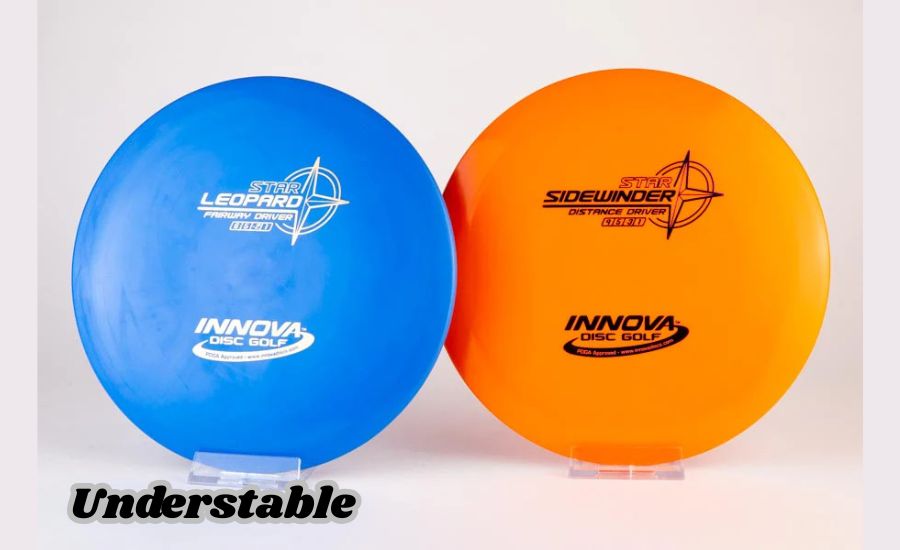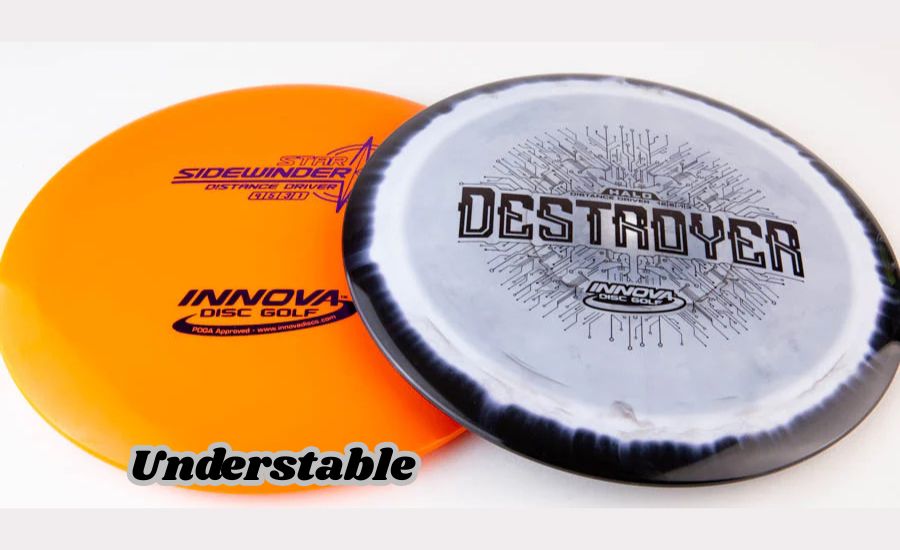Understable discs can feel like magic in your hand. Understable means the disc likes to turn right (for most right‑hand throws), and that can add fun curves to your shots. Here on Vista Glimpse, I’ll break down this friendly word so even brand‑new players can smile and throw farther. Think of it as your playtime helper on the disc golf field!
These discs are light, lively, and eager to fly. They don’t need big muscles to soar, so kids and beginners love them. With the tips below, you’ll see how an understable disc dances in the air, slips past trees, and lands where you want. Ready to start? Let’s roll into the colorful world of understable!
What Does Understable Really Mean?
A gentle‑turning disc can feel like a friendly pet racing across the yard. It likes to glide right for a right‑hand thrower and left for a left‑hand thrower. Think of it as a scooter that naturally veers onto a fun little side path, giving you a sweet curve without extra effort.
Each flying plate has a shape, rim, and weight that guide its travel. When that shape lets more air pass over the top than under the bottom, the nose dips slightly. A small tilt may pull the outer edge down and force the disc to sag from the place of entry. The result is a smooth ride that thrills beginners and experts alike.
Numbers printed on the plastic give clues about this motion. High turn values point to a wider curl, while low fade values show a gentle finish. Add them together and you can predict whether it will bend early, coast straight, or hook late. Learning to read those numbers is like decoding a secret treasure map.
Why does this matter? Because knowing the curve lets you thread narrow tunnels, dodge trees, or slip around a corner. Imagine throwing a paper plane in an open space–you’ll require the correct size and speed to turn the right turn. An understable disc delivers that same magic in a sturdy plastic shell, ready to spin, slide, and land exactly where you imagine.
Why Choose an Understable Disc First?
Many new players grip a driver and hope for power, but a gentle‑curve model offers quicker wins. Its lighter rim and easy turn match small hands, slow arms, and curious minds. One clean flick sends it gliding further than expected, building confidence with every yard.
Beginners also struggle with holding flat angles. A forgiving flyer needs less perfect form to travel straight. Even if the wrist wobbles, the disc corrects mid‑flight, smoothing out bumps like shock absorbers on a bike. Success comes sooner, and early smiles turn into lasting passion.
Picture a playground swing: a gentle push still carries a child high because the swing’s design does the heavy lifting. In the same way, this disc’s friendly shape stretches distance without demanding muscle. They learn to time their footwork, timing and aiming before they tackle more powerful equipment.
Cost matters too. Many starter packs bundle one such shape, saving money, shelf space, and decision stress. Keep that simple setup until you master release angles and field lingo. When your throws stay level and fly far, you’ll know it’s time to upgrade. Until then, an understable disc is the right first friend on your plastic journey.
Simple Grip Tricks for Understable Throws

Start with light pressure: imagine holding a baby bird—firm enough so it won’t hop away, yet gentle enough so it can breathe. This balance keeps the wrist loose and snap strong. A relaxed hand lets the rim pivot in the fingers, adding clean spin that feeds the disc’s natural curve.
Next, place the index pad near the inside of the rim, not under it. This position sets a flatter release, preventing accidental nose‑up launches that steal distance. Keep the middle knuckle tucked slightly; that tiny knuckle bend helps pack spring into the final whip.
Use the “fan grip” for mid‑ranges and putters. Spread fingers evenly, pressing pads on the flight plate. With improved stability it becomes less wobbly and discs are taken off easily. For drivers, shift to a power grip, but resist squeezing like a vice. Over‑tightening kills spin and slows the flight.
Finally, time the pop. Pull the elbow through, then snap the wrist as the disc passes your front hip. That last‑second flick boosts rotation without brute force. More spin means a stronger turn, allowing the disc to paint beautiful arcs. Follow these easy techniques and watch your understable partner dance across fairways.
Understable vs. Overstable: Spot the Difference
Imagine two identical toy cars on a kitchen floor. One car always drifts right, the other pulls left. Both start from the same place, yet their wheels and weight decide their path. In disc golf, plastic designs create similar contrasts, shaping unique curves that players exploit for specific tasks.
An early‑turning glide helps when gaps open to the right side. It bends gently, sneaks past obstacles, then settles down softly. Overstable patterns on opposite hand, combat the wind, and eventually end in a with hard left. They serve as anchors for solid structures. Together they form a toolbox: one cuts ribbons through calm air, the other punches holes through storms.
Measurement lives in the last two numbers of flight ratings. Negative turn values signal rightward drift; higher fade numbers promise solid left hooks. Add them—as teachers often say—and see which axis wins. A final score below zero points to the early‑turn friend, while a score above zero leads to the resistant worker.
Choosing between them is situational. Tailwinds boost glide; headwinds demand bite. Narrow fairways love pencils that curve away from danger; wide fields embrace blades that crash dramatically. Balance matters most. Keep one understable disc for carving right and one beefy disc for reliable fades, and you’ll conquer courses with artistic flair.
Best Understable Drivers for New Players
First up is the Leopard‑family driver. Its slender rim, medium speed, and generous glide make it a staple in youth camps and community clubs. Even small flicks travel surprisingly far, and the disc’s gentle finish stays forgiving through early mistakes.
Next, try the Mamba‑style flyer. Though slightly quicker, it remains beginner‑friendly, granting dramatic s‑curves that trace rainbow arcs across fairways. Lightweight versions float like dandelion fluff, perfect for low‑strength arms eager to chase big distance.
A third standout is the Sidewinder cousin. Players praise its straight starts, mellow turns, and soft landing kisses. Season it with tree bumps and it becomes an emergency roller, slipping under branches and skimming grass for bonus yards.
When shopping, pick mid‑range weights around 165 grams. Lighter plastic lifts sooner, while heavier shells over‑power young arms. Bright colors increase visibility, saving search time and frustration. Test each model in a calm field, then record distances and release feels in a simple notebook. Over weeks, patterns appear, guiding future choices. Stick with your favorite understable driver until form tightens and distances climb.
How Wind Changes Your Understable Flight
Picture waves pushing a beach ball. A headwind acts like surf crashing into the ball, flipping it backward and up. In disc golf, that headwind exaggerates early turn, often flattening a curved flyer into an accidental roller. Wise players read flags, trees, and even hair wisps before deciding on a throw.
Tailwinds do the opposite, pressing down on the flight plate and reducing lift. The disc stays flatter, sometimes gliding beyond normal distance. Enjoy the free push, but remember that lower landing angle may skip further on hard ground. Adjust power and aim accordingly.
Crosswinds blow from the side, tilting the flight arc sideways. Release angles must counter‑lean: tilt the outer edge upwind to fight drift. Practice this on a soccer field, marking targets with cones. Vary speeds and stances, then analyze where each shot finishes.
Always have backup plans. Carry one extra disc that resists wind more fiercely and one lighter flyer for still mornings. If gusts gust too wildly, shorten run‑ups, reduce height, and focus on clean spin. By learning how breezes grip your understable companion, you’ll turn windy days into strategic puzzles, not painful struggles.
Fun Games to Master Understable Shots

Try “Curvy Gates.” Place two cones twenty feet apart forming a sideways door. Stand fifty feet away and aim to curve the disc through the gap. With each success, widen the distance or narrow the gate. Celebrate hits with high fives and silly dances to keep spirits bright.
Next comes “Flip and Catch.” On an open soccer pitch, mark three landing circles at eighty, one‑hundred‑ten, and one‑hundred‑forty feet. Make a few hyzer-flips, aiming to hit the circle within each. Score points based on closeness and tally totals like mini‑golf. Friends compete, cheer, and share tips after every round.
“Roller Relay” builds ground‑skimming control. Draw a chalk line stretching forty yards. Players must roll from start to finish staying on or inside the line. Penalty strokes add if the disc strays. This teaches touch, angle, and finish length.
Finally, play “Wind Detective.” Each group studies trees and flags, predicts wind direction, then rates gust strength on a homemade chart. Throw three test shots and record shapes. Compare predictions to outcomes, refining guesses. Repeat on different days, and soon weather reading becomes second nature. These joyful challenges turn practice into adventure and strengthen bonds with every understable glide.
Fixing Common Understable Mistakes
Mistake one: nose‑up releases. The disc stalls, climbs, and drops like a frightened bird. Cure it by tilting the wrist slightly downward at release. Picture pouring water from a pitcher—steady, not too steep. Video your throw from the side to spot early lifts.
Mistake two: over‑powering. Beginners think more muscle equals more distance. Instead, the disc flips, turns, and crashes. Focus on clean form, smooth pull‑through, and wrist snap. Practice slow‑motion swings with no plastic, then add half‑speed tosses to feel timing.
Mistake three: ignoring wind. A gentle tail breeze hides errors, while a sneaky left crosswind drags the disc off‑course. Stop, breathe, and study surroundings. Toss bits of grass upward and watch their drift. Adjust aim and angle before each shot.
Finally, trust feedback. If throws keep veering mid‑flight, chalk lines or cheap field markers reveal release angles. Take notes after ten shots, see patterns, and set tiny goals for next session. Step by step, habits improve. Your helpful understable partner will soon obey commands like a well‑trained pup, rewarding patience with growing distance and accuracy.
Understable Mid‑Ranges: When to Use Them
Mid‑ranges bridge the gap between drivers and putters, shining at one‑hundred‑to‑two‑hundred‑foot approaches. Their blunt rims slow travel yet keep glide smooth. Perfect for shaping gentle right bends without overshooting the basket, they land softly, reducing skips on tricky greens.
These discs also handle low ceilings. When branches block tall hyzers, a flat release with slight turn drifts under limbs and settles near targets. Ground‑hugging flights lessen unpredictable bounces, saving strokes on tight woodland holes.
Use them for touchy flicks around corners too. Forehand flicks lack back‑swing power, so the disc’s natural curve supports shot shape. Slow speeds mean better control near water hazards, where distance is less important than safe landings.
Finally, mid‑range rounds improve skills. Play an entire short course using only one disc. Creative shot planning grows, and muscle memory deepens. That single understable mid‑range becomes a trusted ally, teaching you how spin, angle, and height interact in real time.
Kid‑Friendly Understable Discs You’ll Love
Children need lightweight plastic, bright colors, and soft edges. The Dragon‑style disc, weighing under 150 grams, actually floats in water, ending tear‑filled pond rescues. Its gentle rim fits tiny fingers, and the basic flight inspires giggles when it arcs smoothly through air.
Another option is the Sonic‑type putter. With deep sides and grippy plastic, it feels like a small frisbee. Low speed numbers mean kids can achieve full flight on short throws. Parents can stand fifteen yards away, toss back and forth, and bond over flying catch sessions.
For team games, hand out matching colors so youngsters cheer one another. Try “ring toss” drills aiming at ground hula hoops or chalk circles. Success breeds confidence; confidence ignites commitment. Soon, family park days turn into weekend league adventures.
Safety plays a role too. Teach kids to shout “fore,” watch surroundings, and never race in front of throwers. Combine gentle rules with friendly plastic and growth skyrockets. An understable junior disc becomes both a toy and a teacher, nurturing healthy habits in sunshine and fresh air.
Turn Numbers Explained for Understable Discs
Flight charts list four digits: speed, glide, turn, fade. The third digit—turn—grabs attention. Negative values signal early drift. A minus‑one nudges slightly right, minus‑three bends boldly, and minus‑five can flip flat into a ground roller if thrown powerfully.
Think of turn like steering a wheel. A small wrist wiggle changes lane; a sharp twist makes a U‑turn. Players choose numbers to fit holes: short doglegs crave quick curls; long fairways prefer mild s‑curves. Record field tests in a simple log, noting release speed and finish spot.
Remember that plastic blends and weight alter numbers. Champion plastic in heavy form flies straighter than lighter baseline blends. Specific runs can also vary slightly. Always test identical molds in a calm field before trusting printed stats.
Knowing these figures builds strategic brains. Before teeing off, visualize the curve, then match a disc whose turn value fits. A single glance at your cheat sheet saves practice strokes and mental energy. With each smart choice, the understable helper becomes predictable, turning numbers into yardage gains.
You Need To Know: Boston Celtics VS Miam
Rolling with Understable — Easy Roller Shots

Rollers start in the sky but finish on the ground, spinning like wheels down fairways. Select a disc that has a high turn, so that it flips horizontally before landing on edges. Aim slightly left for right‑hand backhand throws; the disc will tip, stand tall, and race right before curling back.
Grass height matters. Cut grass offers smooth highways; tall weeds slow rotations. Hard dirt speeds travel but adds bounce risk. Scout landing zones before launching. Lower nose angle and add extra power, because ground friction steals momentum quickly.
Practice distances by marking lines every twenty feet. Release from one spot and watch where the disc settles. Note how speed and angle shift finish length. Adjust footwork to gain repeatable timing, building a mental map of roller potential.
Use rollers when ceiling branches limit air or when fairways twist sharply. They slip under obstacles and bypass corner trouble. Perfect them on calm mornings, then surprise friends during competitive rounds. One great wheel shot can skip past rivals and earn big applause. With an understable flyer, rolling becomes a hidden superpower in your bag.
Keeping Your Understable Disc Straight in Calm Air
Still mornings offer canvas‑clean skies where tiny mistakes show clearly. First, lock in flat releases. Put your foot on a square and plant the your front foot and then move the disc to level the chest. Imagine sliding toast into a toaster slot—straight and even.
Second, lower launch height. A disc tossed too high stalls, turns abruptly, and fades early. Waist‑to‑shoulder height balances glide with control. Use distant soccer goals as horizontal targets to maintain alignment.
Third, reduce power just a touch. Smooth energy prevents sudden torque that could flip the disc. Favor spin over brute force. That gentle juice helps the disc hold its rail, landing near center fairway.
Lastly, trust muscle memory. Repeat the same motion with mindful breathing. Count “one‑two‑three‑snap” aloud if helpful. Consistency outshines raw distance. A calm‑air field session sets good habits, so when wind returns, you merely tweak angles. Straight flights with an understable friend soon feel as easy as rolling marbles on a kitchen table.
When NOT to Throw Understable (Headwind Alert!)
Headwinds push against forward motion, peeling the disc open like a parachute. That sudden lift magnifies early turn, causing wild flips or nose dives. If the wind is rumbling over the course, stop and think about your the club you choose to use. Overstable plastic could be able to save strokes.
Check wind readings with simple tools. Wet a finger, raise it, and feel chill on the breezy side. Drop light grass and watch its dance. If strands zoom past your shoes, expect trouble. Even skilled pros switch to beefy drivers or mid‑ranges when gusts roar.
If you must throw, lower aim and add hyzer angle. Tilt the outer edge downward; wind then pushes it upright mid‑flight. Keep trajectories low, letting air flow over the top rather than under. Shorter run‑ups reduce wobble and strengthen accuracy.
Practice in storms to learn limits safely. Take spare discs that you could manage to keep from losing. Note which wind speeds flip which molds. After a few field days, instincts sharpen, and you’ll know exactly when your trusty understable flyer must stay in the bag.
Building a Bag: Balancing Understable and Overstable Discs
Picture a painter’s palette: bright yellows, deep blues, gentle greens. Each color has a purpose. Likewise, a smart disc golfer carries curves both right and left, long and short, high and low. Balance breeds versatility.
Start with three tiers: drivers, mid‑ranges, and putters. In each tier, include one gentle‑turn model and one overstable anchor. The first carves rightward or straight, the second fights wind and hooks predictably left. Together they tackle nearly every fairway puzzle.
Label discs with a marker: “turn,” “straight,” or “fade.” Write distances achieved during field tests. This quick glance system speeds decisions on tees, letting you grab the correct plastic without delay.
Review bag contents every month. Remove duplicates, keep favorites, and add new shapes only after careful research. Over time, muscle memory binds each mold to certain shots. When tournament nerves strike, familiarity fuels confidence. And confidence, paired with your faithful understable partner, transforms tricky courses into creative playgrounds ready for your best art.
Conclusion
Learning about understable discs is like making a new friend in disc golf. They are easy to throw, fun to watch, and help your disc go far even if you’re just starting out. These discs turn gently and give you more control, so you can enjoy every throw.
If you want to get better at disc golf, practicing with an understable disc is a great idea. It helps you learn how to aim, how to spin the disc, and how to throw with just the right power. So grab your disc, head to the park, and start having fun today!
You Should Know: Auction4Cars
FAQs about Understable
Q: What does “understable” mean in disc golf?
A: It means the disc turns right (for right-hand throws) at the start of the flight. It’s good for beginners and long-distance throws.
Q: Are understable discs good for kids or new players?
A: Yes! They are easier to throw and fly farther with less power.
Q: When should I use an understable disc?
A: Use it when you want the disc to turn right or go straight for a long time.
Q: Can I use an understable disc in strong wind?
A: No, it’s not the best choice. They can flip too much in heavy wind.
Q: What disc numbers show that it’s understable?
A: Look for a turn rating like -2 to -5 and a fade of 0 to 1.
Q: Do understable discs help me throw farther?
A: Yes! Especially if you don’t have a lot of arm power.
Q: Can pro players use understable discs too?
A: Yes! They use them for special curve shots and rollers.
Q: How do I know if my disc is understable?
A: Check the numbers on the disc or see if it turns right when you throw it flat.

